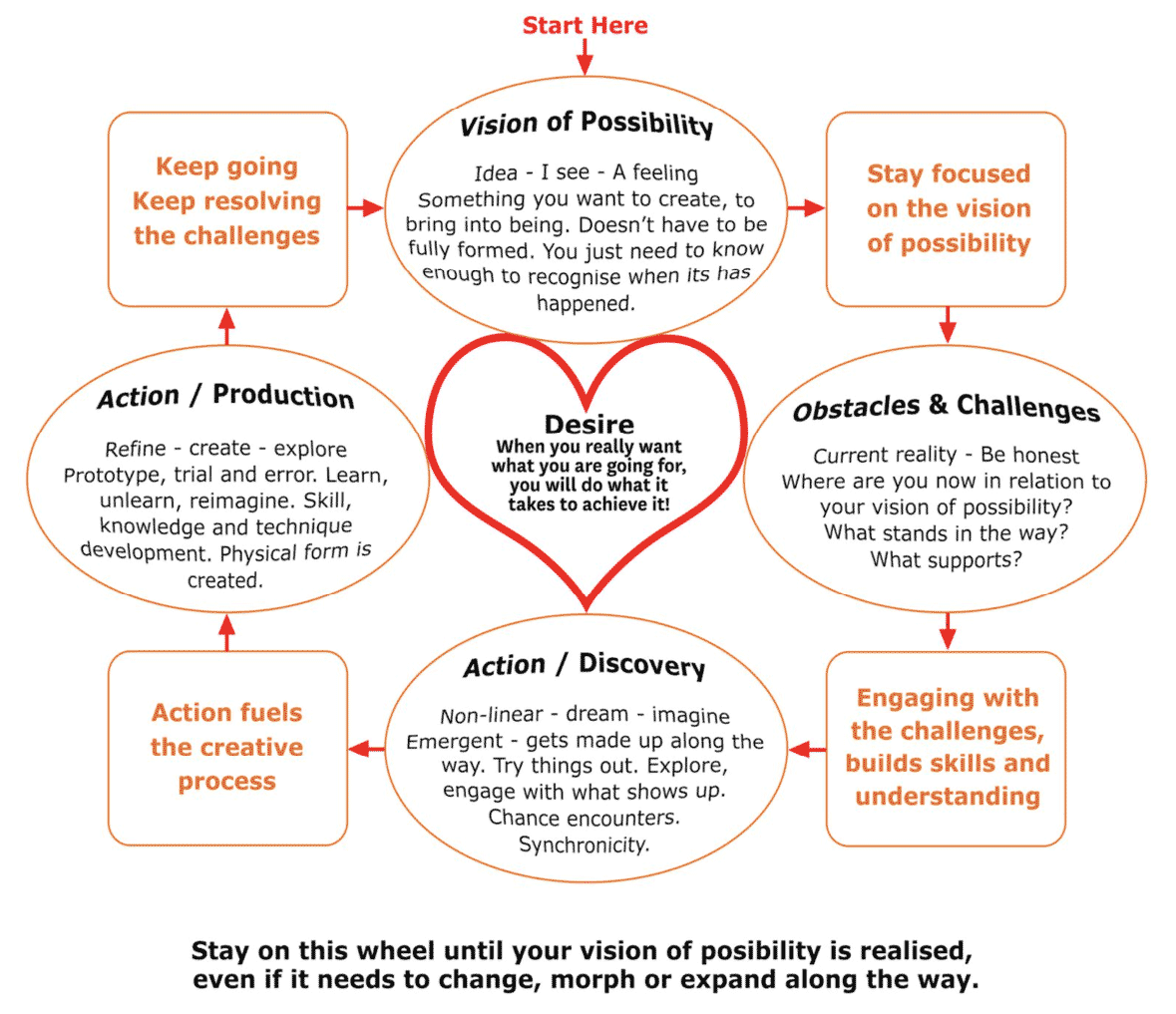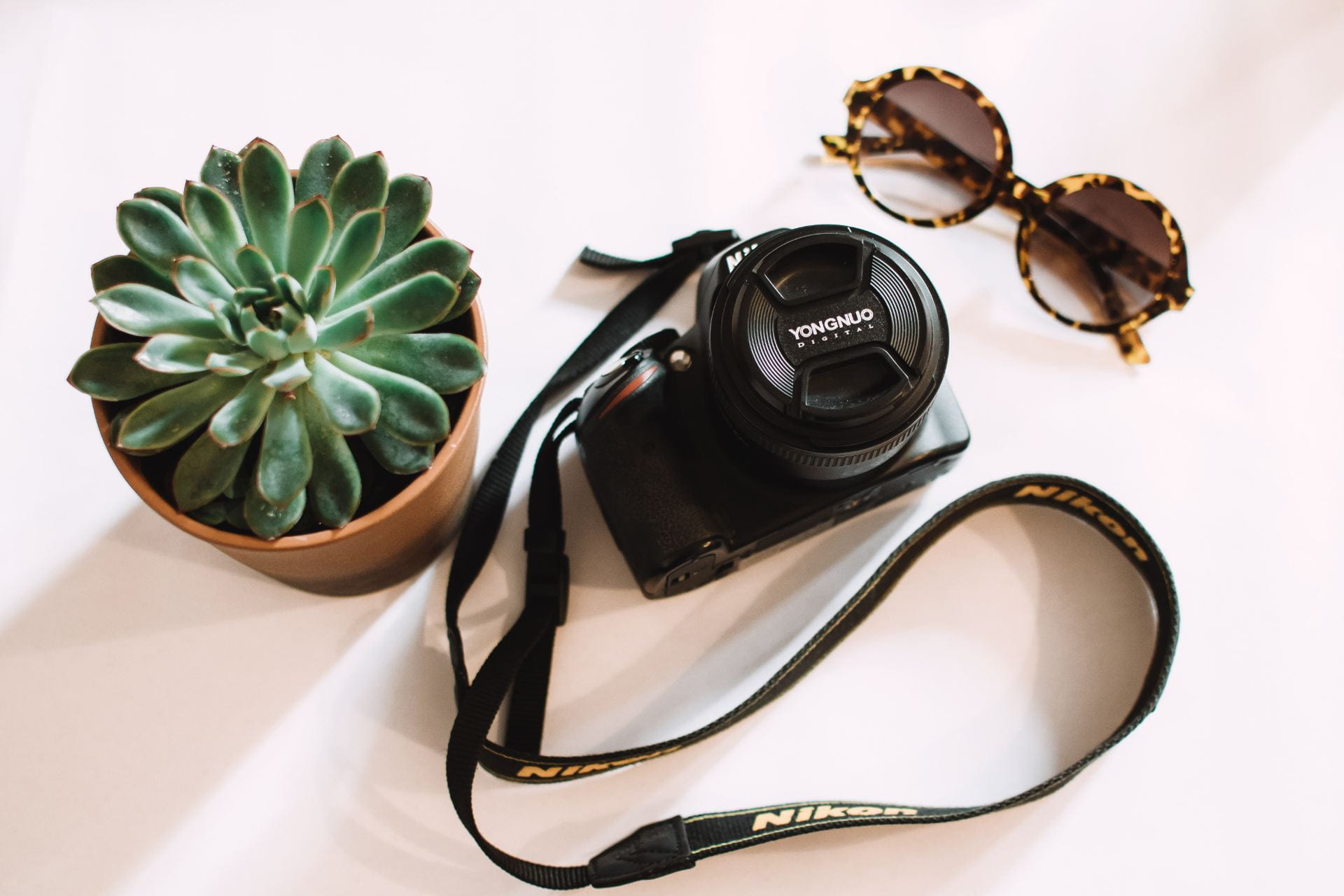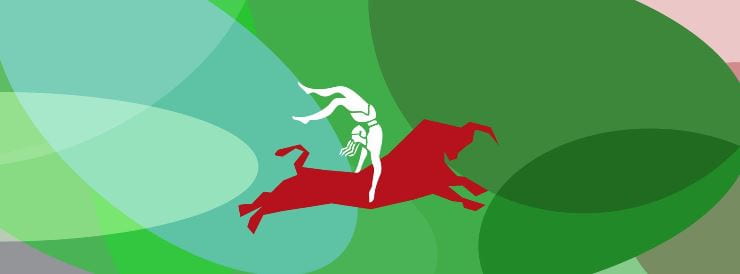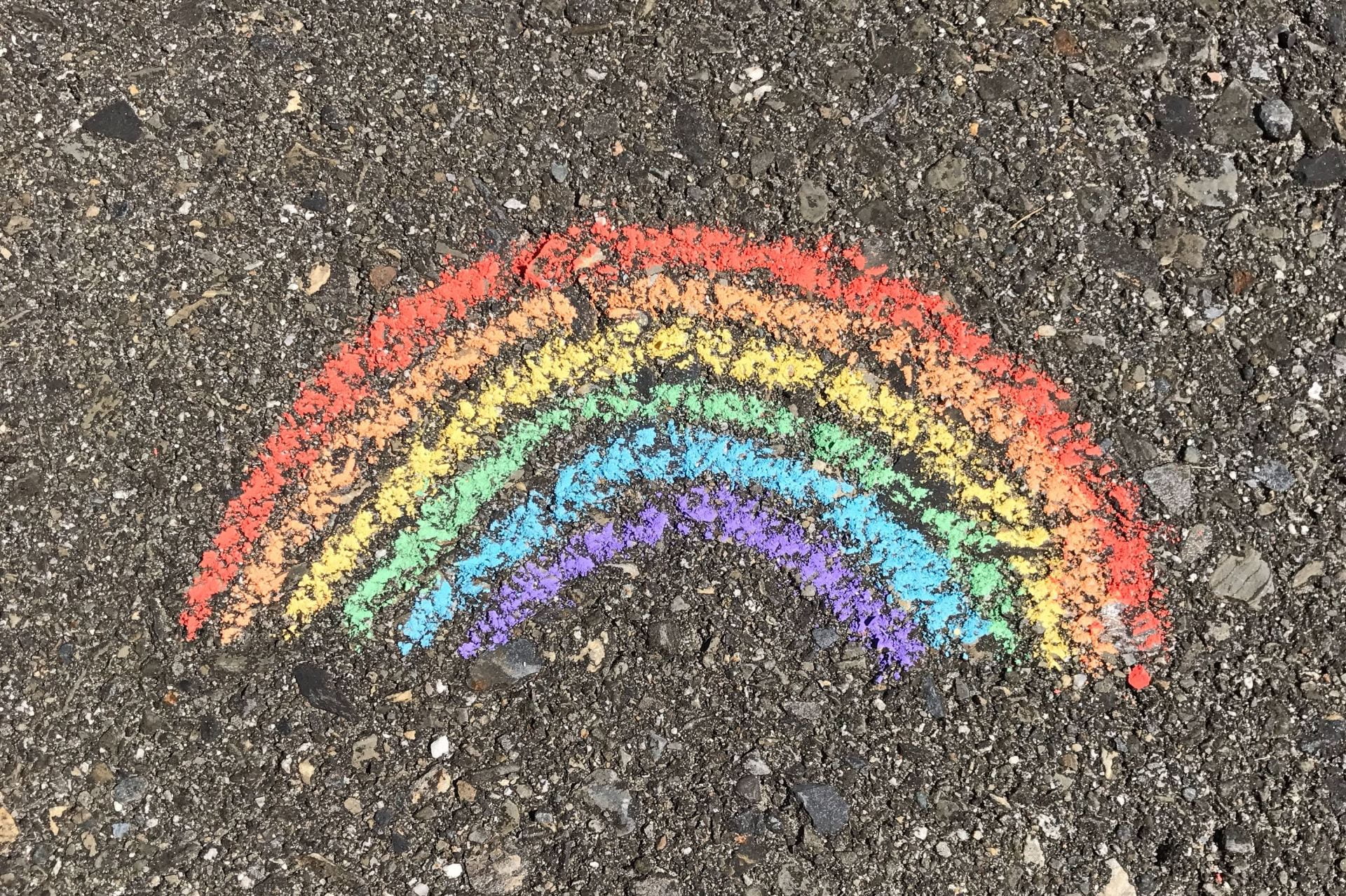
A creative career is the journey of a lifetime, and it’s important to have tools and resources to help navigate through life’s ups and downs.
Creative people have the opportunity to use their creative process to undertake any task to achieve their goals. This workshop is focused on building resilience and learning how to apply that creative process to succeed.
This workshop was delivered on the 3rd of August at The Unleash Space at The University of Auckland. The resources are collated here for your use.
The Path of Least Resistance
Musician and composer Robert Fritz’s book, “The Path of Least Resistance” tells how over time, he watched many of his creative friends as they created their music or art. He began to deconstruct what they were doing, and recognised a set pattern – the creative process.
Most creative people work with this process, but are likely doing so intuitively rather than consciously. After discovering this, Fritz has taught many people to work with their creative process consciously, and to apply it to anything they wanted to achieve.
If the creative process is so powerful, it would be natural to wonder why many artists have difficulties in their lives. It is because they do not know what they know.
The Creative Brain
The film “The Creative Brain” introduces accomplished creative professionals from different disciplines, and unravels what they have in common – the creative process.
The film is available to stream on Netflix in New Zealand, or see creativebrainmovie.com for more ways to watch.
The Creative Process
This is a distillation of the creative process we all go through. In the workshop we explored this model in relation to our own practice. The steps can be applied as follows:

Nine Things to Remember When Directing Your Creative Process
These might seem a lot to remember! But these reminders will come in handy as you face the challenges that are inevitable as you go through your creative process. A printable version of these is available in the workshop handout; download it at the bottom of this page.
1. Vision of possibility:
Know what you want to create, achieve or produce. Have a clear vision and stay focused on the outcome you want. Have a really strong desire for the outcome, as this will enable you to do what it takes to achieve it. There will be challenges and it is desire that keeps you going.
2. Obstacles and challenges are part of the journey.
Moving through them is integral to the creative process. Face into them rather than shy away from them. They do not mean this is the wrong way or wrong time. Overcoming a challenge develops a skill or an understanding that is required for the successful outcome of what you are creating.
3. Action fuels a creative process.
No action = nothing happens. To overcome a creative block – take action. If that feels too difficult break it down into smaller actions. Taking one tiny action is all that is needed to get the process moving. Any action will do – even a wrong action will stimulate your creative process. Actions need to be in the here and now. If they are too far in the future they are ideas about action and not real action.
4. It’s intuitive.
Follow your intuitive feelings rather than your rationalising head. Your feelings are signposts in a creative process. If you are not sure if an action is right or not, or should you do this or should you do that? – start taking actions that move you towards your idea and this will bring you a clearer yes or no. To stand still and try to work it out in your head, will not bring any further insight.
5. It has a life of its own.
This is so once you see the possibility and decide this is what you want to create or bring into being. And once you have taken some action steps in the process, it will take on a life of its own. Things will happen that take you towards your goal that you haven’t directly made happen. Chance encounters and synchronicity are part of the process so engage with them when they cross your path.
6. Get comfortable with tension.
You are moving beyond where you have been before and this can feel uncomfortable. In a creative process this is called creative tension. You will encounter resistance in the tension. It does not mean it is the wrong way or you are off track. Being comfortable enough to stay in the tension is where you will find the breakthroughs.
7. There is no right or wrong way.
Make it up as you go along. Use your imagination. Prototype, try things out – refine. This is your creative process; there is no set path to follow. Give yourself permission as no one else will give it. Make mistakes as they lead and inform you. Have confidence in your creative process.
8. How gets made up along the way.
At the outset you don’t have to know how you are going to achieve what you want and you don’t have to have the means to achieve it, ie money, knowledge, connections or skill. You just have to know the vision of possibility, what the next step is and take it. Be willing to enter into the discovery, the unknown. Engage with the people, signs and things that show up to lead you to the next steps. Connections, knowledge and skills will develop along the way. The HOW gets revealed as you go along.
9. Have unwavering faith that what you are after will come about.
It will often take longer than you think. It may arrive differently to how you expect and usually the end result of your creative process will be greater than what you initially imagined at the outset.
GROW Your Vision
Keep on track toward your vision of possibility, with these four simple steps.
G
Going for your vision of possibility. Goal.
Desired outcome. Always stay focused on this.
R
Reality. Be honest.
Where are you now in relation to your goal?
What supports and what hinders your progress?
O
Options – what ways forward are there?
What next steps can you see?
W
What action steps can you take? Today? Tomorrow?
Taking the next step will inform the next step after that.

Practice
Like any new skill, recognising and applying the creative process to anything you want to achieve takes practice to begin with. Over time the steps flow naturally.
Knowing that you are on a creative journey lets you use these tools to continue on that pathway until your vision is realised.
Creative Adventures in Manifesting Reality
Workshop facilitator Lorraine Blackley’s e-book is generously made available for guiding you along your creative journey.

Related Links
A glimpse into composer’s creativity
New Zealand composer and University of Auckland School of Music Graduate, Claire Cowan speaks to Radio New Zealand about her creative process and working with other talented New Zealand artists.
– Radio New Zealand
Boosting Resilience: Survival Skills for the New Normal
This executive education programme from Cass Business School in the UK has a wealth of videos and resources relating to resilience in Arts leadership, particularly useful for teaching practice. – boostingresilience.net
Want more?
The resources from our other workshop in the Wellbeing series are available here: Workshop 1: Exploring Wellbeing
